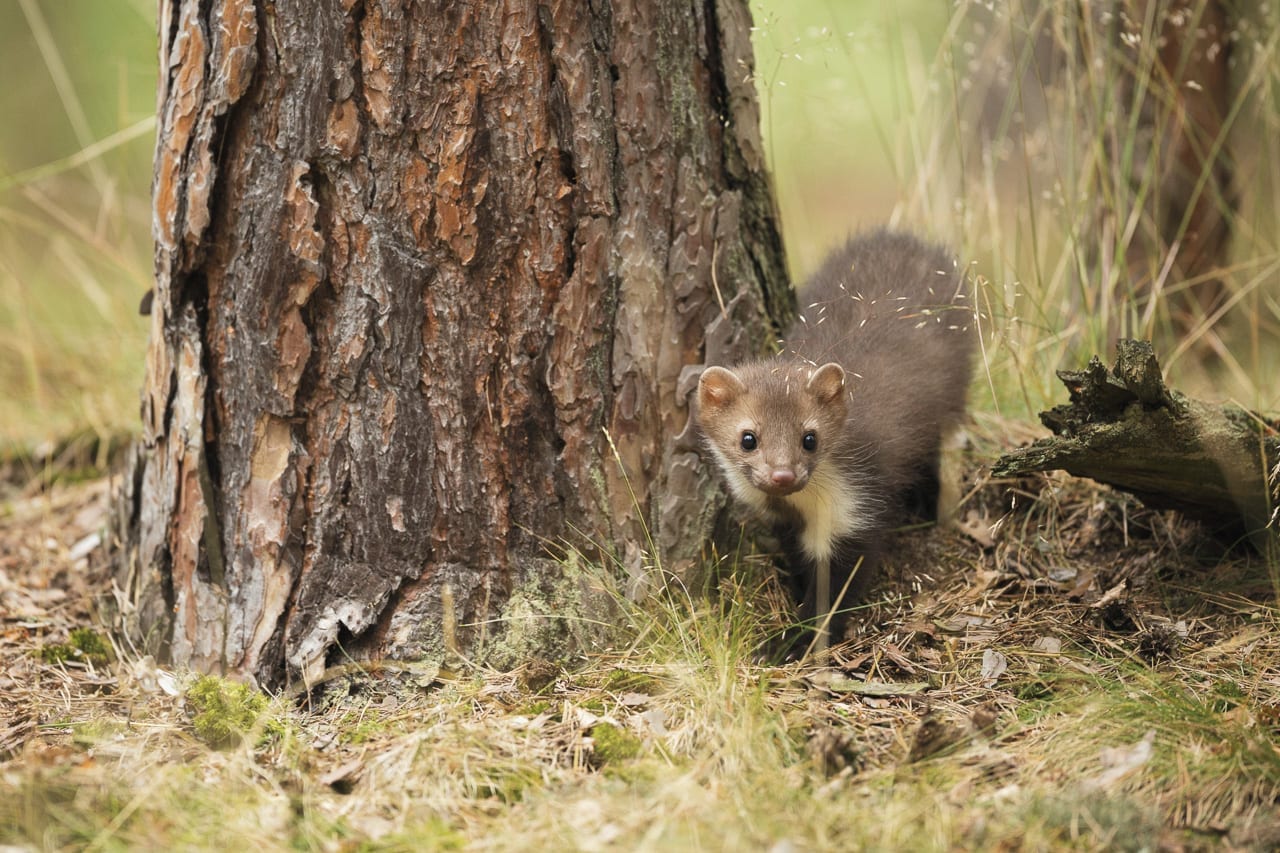
Pine Marten
Bele. Martes martes
Pine Martens are similar in size to the domestic cat, with chocolate coloured fur and a distinctive creamy yellow throat and ‘bib’. They hunt, forage and scavenge, feeding on small mammals, birds, bird eggs, frogs, insects, carrion, nuts and berries, adapting their diets to what is most readily available. Grey squirrels make up part of their diet, so martens could prove a beneficial natural control of this invasive species. In spring, pine martens give birth to between 1-5 kits (young), nesting above ground in tree hollows. The kits are fully independent at six months and in the wild their average lifespan is 8-10 years. Elusive, shy and independent, pine martens live chiefly solitary lives, thriving in both deciduous and coniferous woodland. Their semi-retractable claws (like cats) make them masters of their arboreal surroundings.
In folklore, martens are symbols of determination, skill and luck.
With pine martens almost extinct in Wales at the beginning of the 21st century, The Vincent Wildlife Trust is enjoying success with its Pine Marten Recovery Project, having translocated thirty-nine pine martens from the forests of Scotland to Ceredigion between 2015 – 2017, monitoring them and their impact on the local flora and fauna.
Status at Cambrian Wildwood: Absent, although some individuals have been recorded close by, so we hope they will populate our site naturally.
